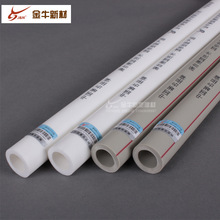New 'metalens' could revolutionize cameras... someday
Harvard researchers have developed a novel, flat lens they say can focus "all the colors of the rainbow." This is a significant departure from the camera lenses made today, which are curved, bulkier, and take up more space.
But there's a catch: The researchers successfully focused light with this lens, which they call a "metalens," but on an extremely small, nanoparticle scale (nanoparticles can be thousands of times thinner than a human hair). While an impressive feat, major tech companies like Apple and Samsung aren't anywhere close to putting this technology into forthcoming phones and cameras.
SEE ALSO:This two-story camera will bring us one step closer to understanding the universeThis laboratory research was published on Monday in the journalNature Nanotechnology, and might one day allow cameras, phones, and VR headsets to incorporate larger lenses that take up less space. This could allow for devices to exploit this added room for other purposes -- like hardware and batteries -- or add larger lenses without requiring a larger, heavier device.
Some forms of visible light have long wavelengths (red) and other much shorter (blue). So to capture all these colors at once, cameras today use curved lenses to focus all the incoming light simultaneously to capture an image. This precise process has served us well for over a century, but these lenses inherently take up more space.
“Metalenses have advantages over traditional lenses,” Harvard physicist Federico Capasso, the study's senior author, said in a statement. “Metalenses are thin, easy to fabricate, and cost-effective. This breakthrough extends those advantages across the whole visible range of light. This is the next big step.”
 An artist's conception of incoming light being focused to a single point by a metalens.Credit: Image courtesy of Jared Sisler/Harvard SEAS
An artist's conception of incoming light being focused to a single point by a metalens.Credit: Image courtesy of Jared Sisler/Harvard SEASThese minuscule metalenses contain even smaller "nanofins," structures that control the speed of the different types of light as they enter the essentially flat lens.
In a statement, Harvard said they "licensed" this lens innovation "to a startup for commercial development." And back in their Harvard lab the researchers plan to do more work, scaling up their nanoparticle lens to something exponentially larger at one centimeter in diameter.
For now, this metalens may only exist in a microscopic world, but the researchers envision bigger things in the years ahead -- though how long remains uncertain.
"This brings us one step closer to the goal of incorporating them into common optical devices such as cameras,” said study co-author Alexander Zhu.
Featured Video For You
These beautiful snowflake photos were actually captured using a microscope
(责任编辑:产品中心)
- ·Google Search tries new tactics for limiting explicit deepfakes
- ·9 Planetariums to Get Lost in the Cosmos
- ·S. Korea to launch two more military spy satellites this year
- ·The mainstreaming of the Republican effort to suppress the vote.
- ·Pressure boost squeezes out more hydrogen from artificial leaves
- ·Fox and Dominion settlement: It's actually fine there's no trial.
- ·National Weather Service accurately forecasts iguanas falling from trees
- ·Can we brew our own beer on Mars?
- ·雅安公安接连破获两起汉源湖非法捕捞案
- ·Six shirts worn by Messi at World Cup sell for $7.8 mn
- ·Best tablet deals as of August 27
- ·土壤检测如何更精更准更高效?送技上门解难题
- ·Infrared Photos, Instantly
- ·Abortion pill case at the 5th Circuit: Will conservative judges set aside their legal principles?
- ·让法治建设成效更加可感可及
- ·Apple Black Friday deal is all about gift cards
- ·Why Trump can dynamite a sacred, protected mountain to build the wall
- ·The Supreme Court wanted Richard Glossip Dead. Now Oklahoma wants him free.
- ·[Exclusive] Samsung unsure of Suga's future as brand ambassador: source
- ·Videos show where cicadas have already emerged in the U.S.













